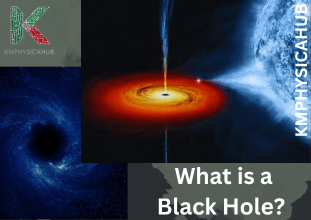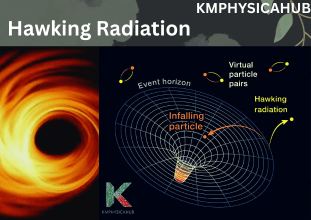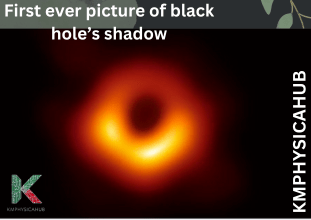Black Holes: Formation, Types, Misconceptions and Future Trends
Black holes are on of the most intriguing and mysterious formations in the whole universe. Try to remember the awesome scenes that were done especially in the movie “Interstellar”? That swirling vortex of light and darkness gave us a glimpse into the awesome sight of a black hole. Picture in your mind a location where even light could not as escape from gravity which is so powerful that it even bends light. That, in essence is what a black hole is all about!
Definition
Black hole is a place in space where the force of attraction of the gravity is so intense and nothing that comes close can escape the force of the Black hole including light. The idea of black holes is derived from Einstein General relativity theory as an impact of mass on spacetime. In other words, a black hole is mainly an enormously large object jammed into a very small area, along with all its mass concentrated because of an immense force of gravity. A black hole is an object in space which contains so much mass that nothing, not even light can get out of it.
Formation of Black Holes
The concept of a black hole can be described with the death a large star as the starting point.
Stellar Black Holes:
The type of star much bigger than our sun, at sometime in its life, exhaust its source of fuel and then collapse due to the force of gravity. This causes a supernova explosion and what is left behind is a very compact core. If this core is big enough (at least three times the mass of our sun), then gravity is so strong that it just keeps pulling those particles together to form a stellar black hole.
Supermassive Black Holes:
These cosmic giants, which are millions or even billions of times more massive than the Sun, are located at the core of the majority of galaxies, including the Milky Way. Although their formation is not understood well till date, scientists believe that they evolve through the consumption of an enormous amount of gas, dust and even stars over millions of years.

Anatomy of a Black Hole
Here are the key features of a black hole:
Singularity: In the middle of the black hole, ranging from infinity, is the singularity where earth’s laws of physics and physics of the universe cannot penetrate. This singularity is the point towards which all that matter that falls into black hole is compressed and it is an infinitely small point but infinitely massive at the same time.
Event Horizon: This is the ‘‘point of no return’’ around a black hole. It is a border in space behind which the gravitational force that object exerts is so powerful that light cannot break free of it. They have to fall inside the event horizon and since they reach the singularity, there is no coming back again.
Accretion Disk (if applicable): When matter enters a black hole, it creates a fast rotating flat structure around the black hole called an accretion disk. This results in the creation of heat and light at this disk and some black holes are actually very bright at the center despite the obscurity of black holes.
Now, to understand how black holes work, we need to talk about:
Gravity: Black holes can be described as the greatest realization of the incredible force that we call gravity. They distort spacetime to the degree so that they form some kind of ‘gravity well’ from which one cannot escape.
Spacetime Curvature: To be precise, think of a bowling ball lying on a trampoline. The ball pulls a small part of the fabric upward and makes a sort of a dip on it, similar to how larger celestial bodies such as black holes cause warping of spacetime fabric.
Spaghettification: If you are to fall into a black hole feet first, the force of gravity acting on your body would be stronger at the feet than at the head. This difference in gravity would pull your body out like spaghetti—a condition that you would not want to experience at all one time!

Mysteries and Misconceptions
Black Holes are Cosmic Vacuum Cleaners: The misconception surrounding black holes results from its name because they do not swallow everything around them. It only possesses a very strong force of attraction within its interior region called event horizon.
Nothing Can Escape a Black Hole: Since the event horizon is incapable of emitting any matter, particles or energy, they can let out a tiny bit of energy termed Hawking radiation.
Hawking Radiation and the Information Paradox: There is a discussion on whether black holes are in fact black or not, given that Hawking suggested that they emit something like thermal radiation near the event horizon. This radiation is said to extract energy from the black hole and consequently leads to the slow evaporation of black hole after sometime.

However, this raises a perplexing question: Where does the information proceed regarding the matter that gets entangled in the black hole? Does it disappear forever, violating the law of conservation of energy we learnt in our middle school physics class? This can be summed up as the information paradox – a concept that remains an enigma to physicists right to this day.
Black holes with all their gravity, tilted space-time, and deep paradoxes continue to be one of the major enigmas of the universe. While mankind is still in the process of unraveling these astronomical mysteries, many other captivating aspects of gravity and the universe could still be discovered.
Observing the Invisible Black Holes
That is a good question that comes in the mind of any physics enthusiast that is: If black holes are invisible, how do we even know they exist at all? Black holes do not allow light to enter or escape so cannot be seen with telescopes or any other optical instruments. Instead, astronomers rely on their effects on their surroundings:
Gravitational Effects: A black hole is a celestial body that has a strong force of gravity on adjacent objects. In the most stunning form, astronomers can sight a black hole through the way stars and gaseous disks swirl around the black hole as well as estimate the mass of the black hole or the monster at the center of the disk.
Accretion Disks: As earlier noted, the material spiraling into a black hole forms what is known as the superheated accretion disk. They release hot X-ray radiation that even telescopes are able to pick and give the position and nature of the black hole.
Some of the most striking observations included the first-ever picture of the black hole’s shadow which was captured by Event Horizon Telescope (EHT) on April 25, 2019. This remarkable achievement provided the best proof that black holes do exist and Einstein’s general relativity theory is right.

Black Holes and the Future of Astrophysics
Galaxy Evolution: There are ideas that the supermassive black holes in the centers of galaxies control star creation and dictate the development of the galaxies as a whole. It is like they are the masters of the universe helping star and clouds move and clash in the universe.
Gravitational Waves: Einstein had predicted that, when black holes merge, they released vibrations in spacetime or what is referred to today as gravitational waves. Such waves contain details of the merging black holes as well as the characteristics of the force of gravity. Measuring and identifying gravitational waves, as LIGO and Virgo instruments did recently, provides a new view into many of the most energetic and violent events of the universe.
Conclusion:
Most celestial objects, including black holes, were thought to be mere theoretical possibilities for a long time, but current research proves otherwise. To their birth during the final moments of the greatest stars to their use in the formation of galaxies, black holes remained an object of endless fascination and an inquiry to our minds. They also contribute greatly to the galaxy formation and provide information about the basic understanding of gravity.
FAQs
Q1. Can black holes be seen directly?
A: No, black holes can never be seen because they actually do not give out or reflect any light. But they are identified through effects they engender in surrounding matter and through the distortion of the light that passes nearby (gravitational lensing).
Q2. Do black holes move?
A: Indeed, black holes possess the ability to travel through space. Astronomers testify that they have seen black holes in motion, typically due to gravitational forces or merging with another black hole .
Q3. What happens if you fall into a black hole?
A: By the time a person reaches the event horizon they face a pressure that can stretch and squish their body leading to what is called ‘spaghettification’. But seen from outside, time would seem to be slowed until it effectively stopped when the person reached the event horizon due to the gravity time dilation effect.
Q4. Can black holes evaporate?
A: Yes, as theorized by Stephen Hawking, black holes could emit particles (Hawking radiation) and shrink in size with time. This process could potentially lead to the evaporation of black holes, given enough time had by black holes to undergo the process.